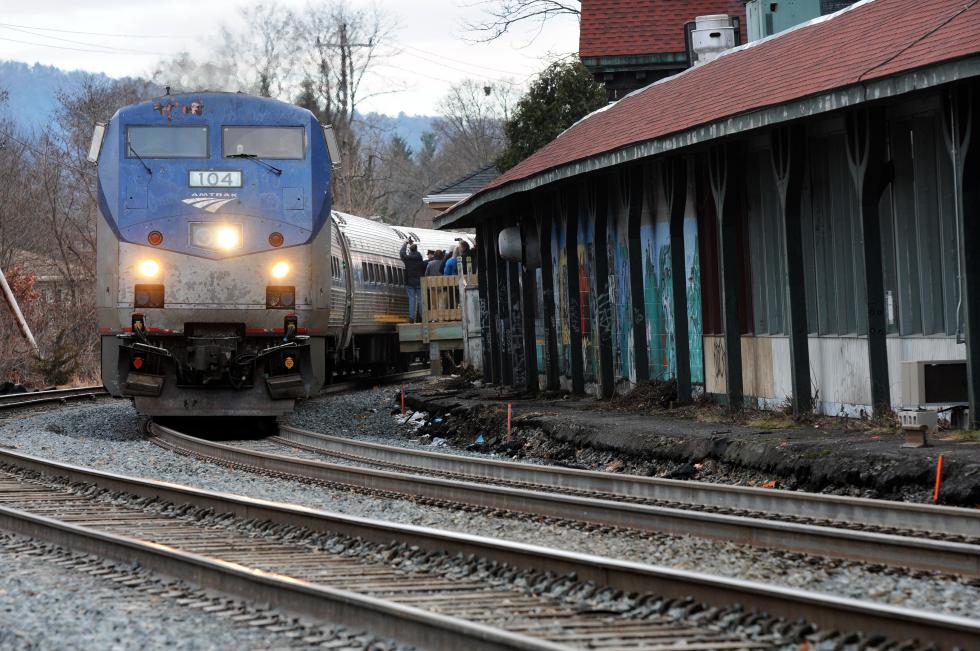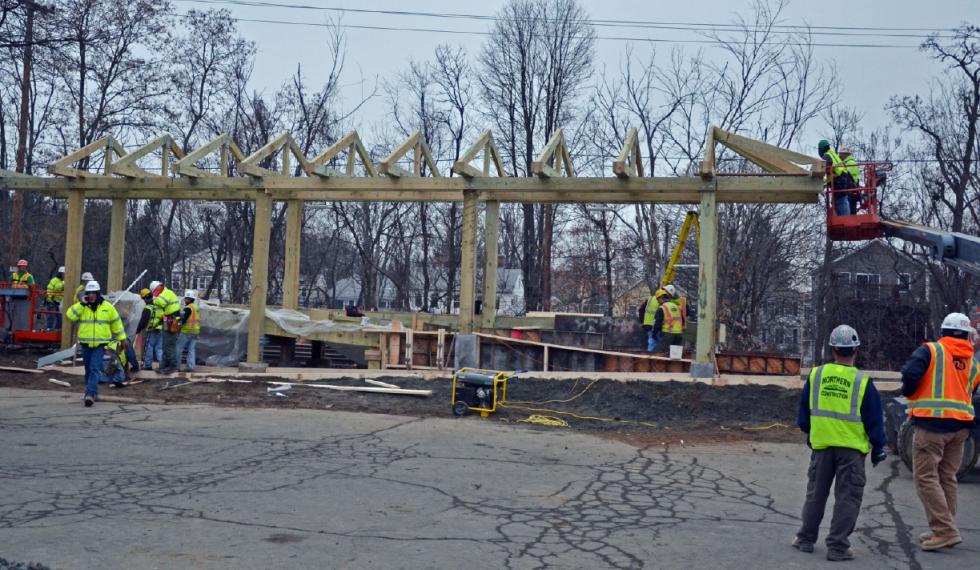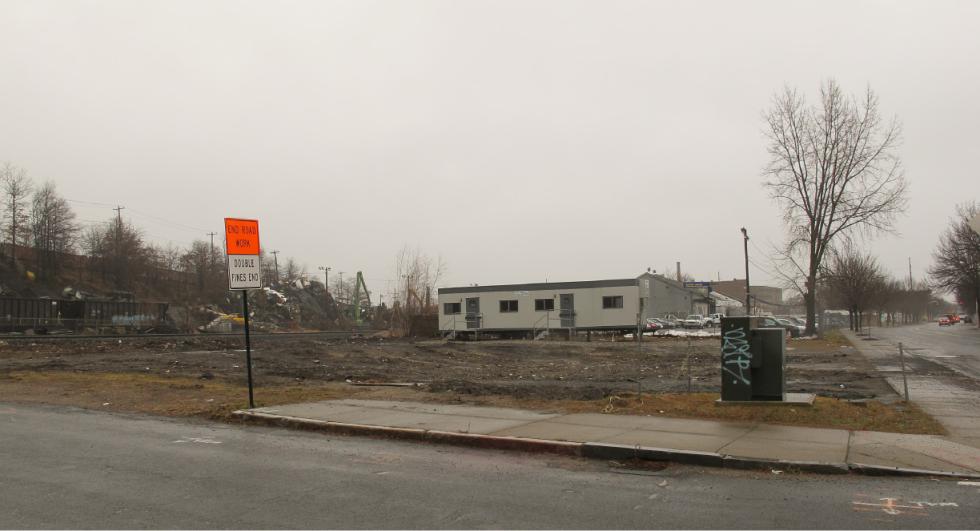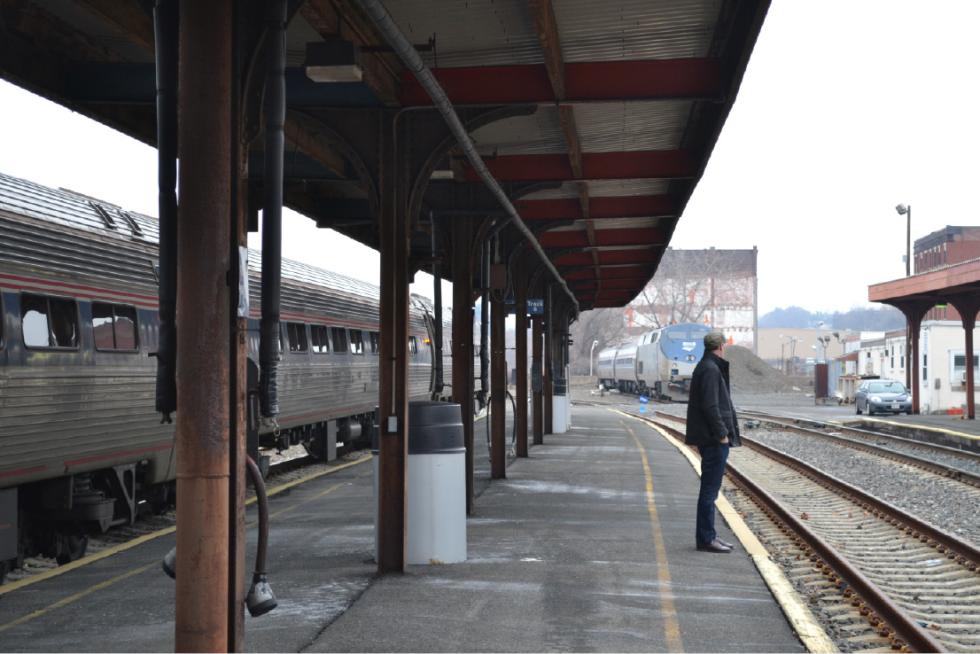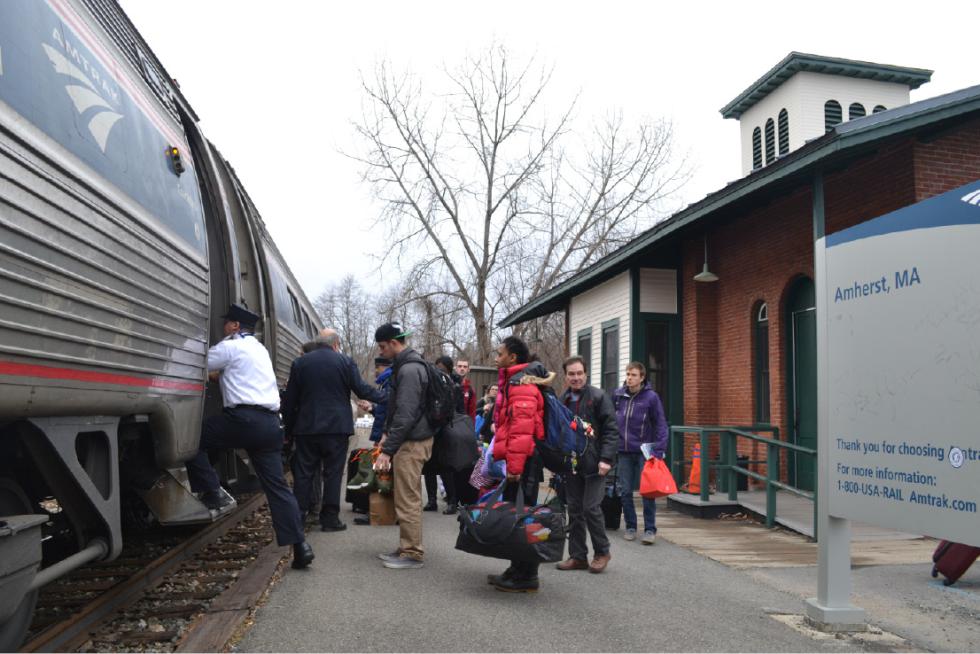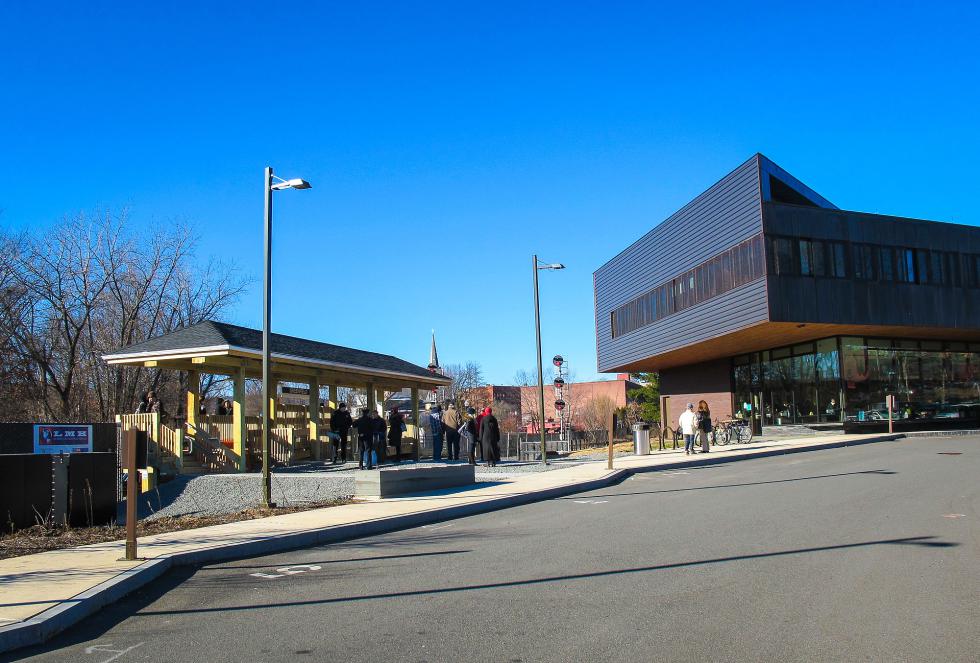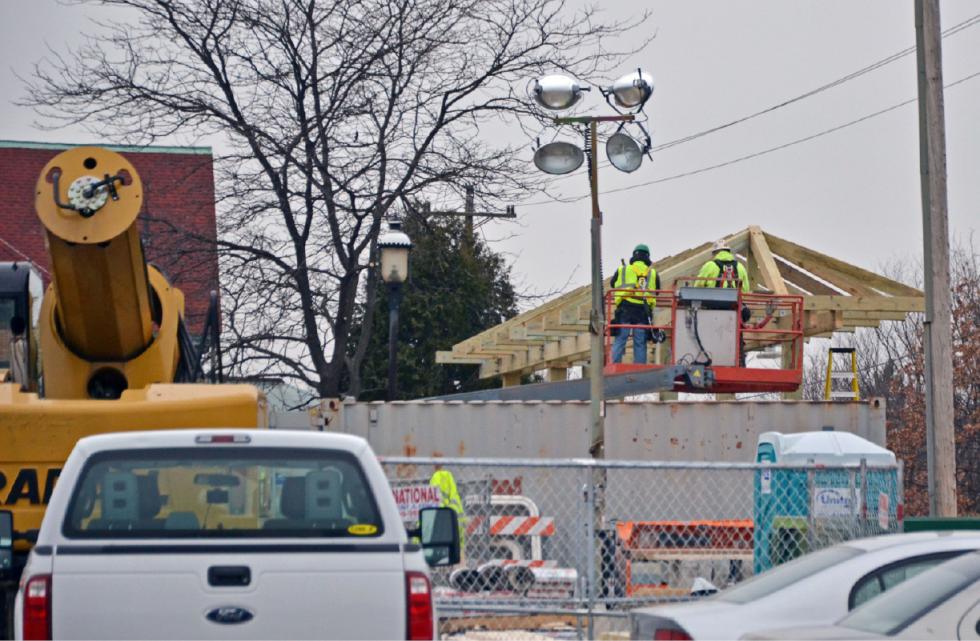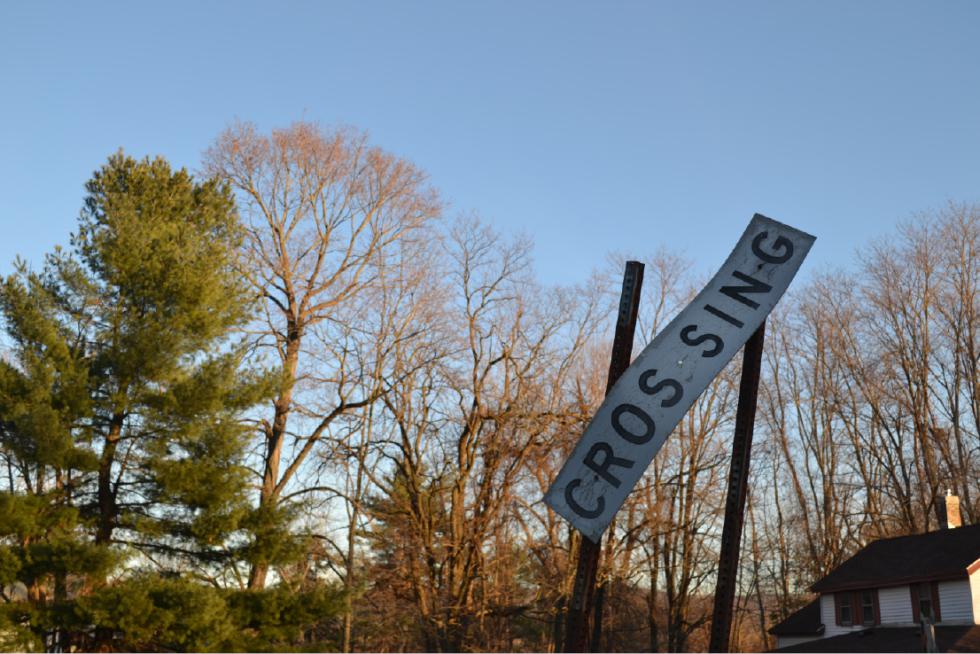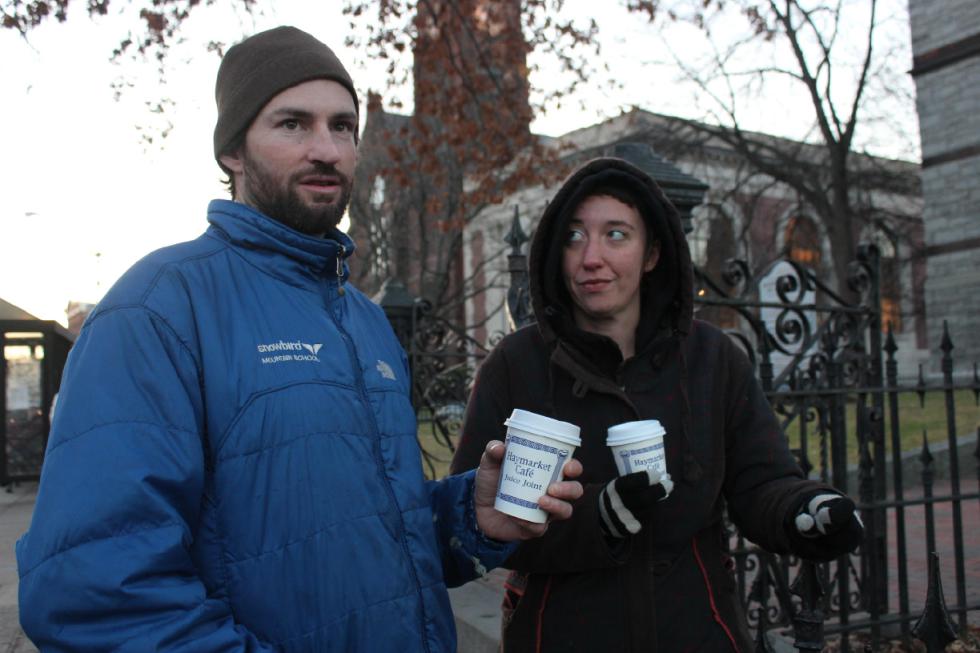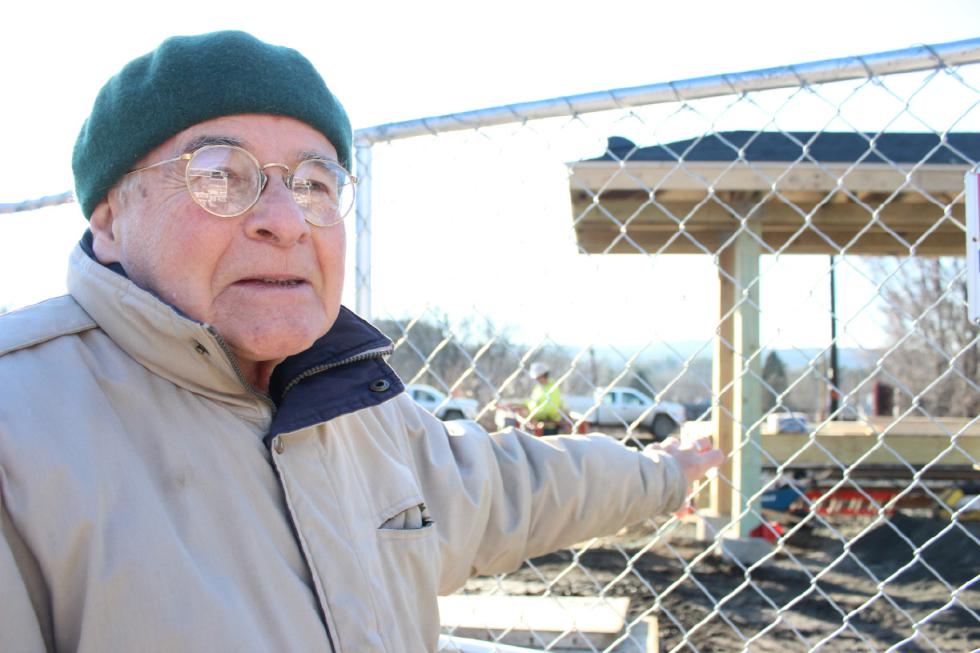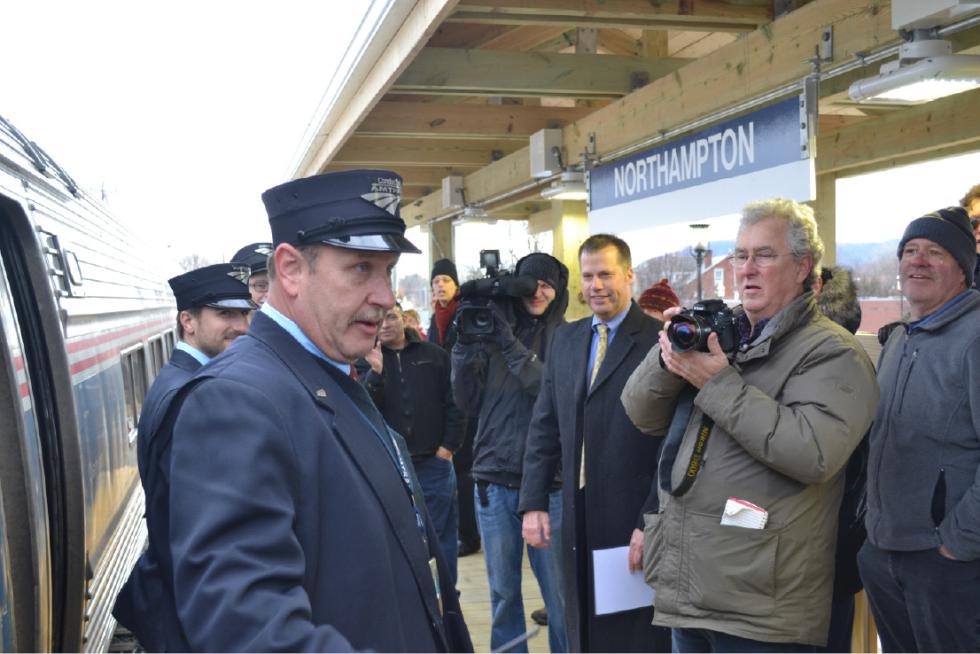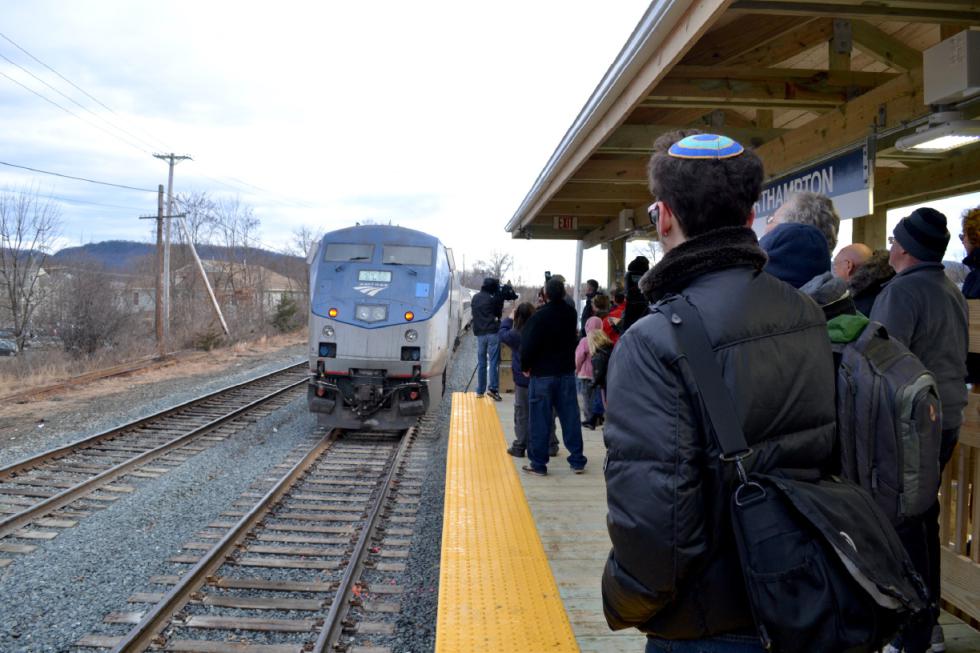At the Amherst train station, one of the last waves of home-bound college students stood scattered across the small platform, many for the last time. Amtrak’s Vermonter line has pulled out of Amherst for good, rerouted now through Greenfield, Northampton, and Holyoke. Great news for those cities, but not so great news for Amherst and its three colleges full of students who rely on public transportation to get home during breaks. Going to the Amherst train station — a small old brick building, half of which hosts a pilates studio — is part of the holiday travel tradition for many students, but not so many that it makes sense to keep the station open. Alana Marconi, 21, of Maryland, didn’t know the station was closing Dec. 28. She’s a senior at UMass, and she expects to take the train to and from school a few more times before she graduates. “I’m glad I got this much out of it, but it’s a bummer that it won’t be around for the last couple months that I’m here,” she said. “I’ll probably just catch the train from Noho now. “It’s no Penn Station,” she said, looking up and down the Amherst platform. “But we have a lot of people here right now, for such a dinky stop.” Anna Cobey, 19, learned the route was changing during her holiday travel planning. “I went to book a ticket to get back here after break, and the station was gone.” Cobey, a sophomore at Hampshire, said she thinks the change makes sense. “It’s a bigger station in Northampton. I remember the first time I came to this station — I was like: This is a pilates school? Am I in the right place?” The Knowledge Corridor runs north along the Connecticut River valley — from New Haven, Connecticut, through Burlington, Vermont. Passengers once filled train cars along this corridor, but during the ’80s interest in the rail service dropped off, the tracks fell into disrepair, and apparently they weren’t worth fixing. Trains instead were rerouted through less efficient routes — trains once stopping in Springfield, Northampton and Greenfield were sent through Amherst and Palmer. Now, however, interest in public transportation has reignited and the service is being restored. American Recovery and Reinvestment Act funds are helping Amtrak bring back the old Vermonter line as part of the “Vision for New England High-Speed and Intercity Rail Network” announced recently by New England governors. Sparing the westward detour through Amherst and Palmer will cut down travel time, and organizers expect it will increase ridership. Trains hit the newly refurbished tracks on Dec. 29. “The ride is supposed to be shorter now, right?” said Jay Craven. “That’s good news.” Craven, 64, lives in St. Johnsbury, Vermont and teaches film studies at Marlboro College. He said he frequently takes the train to New York. On Tuesday he was coming back from Boston, with a break at the Springfield station. “I prefer to take the train,” he said. “I can be productive on the train.” Still, he added, “I do like the idea of speeding up that trip.” One thing Craven doesn’t appreciate about the current route: the track is “very bumpy” in places. “It’s a rough ride from here to Brattleboro,” he said. “It’s the worst part of the train track. It gets funky there for about 25 minutes just north of here.” It is a beautifully sunny and mild winter day at the John W. Olver Transit Center in Greenfield. The air is filled with the clatter of construction as workers busily prepare a platform for railway passengers. An older man stands with his body up against the fence, peering excitedly at the construction. He grips the fence with his left hand and snaps photos with his phone using his right hand, all the while grinning to himself. “I’ve been following it since the start,” says Joe Pagano, 79, of Greenfield. “It’s a big job.” In his lifetime, Pagano explains, he’s seen infrastructure fall to the wayside and suburban downtowns start to lose their splendor. It’s not just the trains themselves that get him going, but the notion of breathing new life back into local downtowns. A retired tool and dye maker who does piano repairs in the Boston area several times a week, Pagano says he does a lot of driving and he wishes he didn’t have to. “This is a good thing,” Pagano says. “Cities have to start doing something about sprawl. But patronage — it’s going to take time. You’re talking about a huge shift in transportation.” The new service may be good for Pagano, but it’s going to be tough on the bus system. Kimberly Haile, marketing director for Peter Pan Bus Lines, says it will be difficult for the company to compete with the commuter rail services in the Valley. She argues that bus travel is the “greenest” form of transportation, that it is more fuel-efficient than commuter rails, cars, and planes. Based on travel industry research, that does appear to be true, although it gets increasingly debatable when it comes to local, in-city travel. Some sources contend that because city bus routes are more stop-and-go than commuter rails, studies sometimes cast them as less efficient. Haile says that there may be opportunities for collaboration between Peter Pan and rail service to bring a more holistic public transportation system to the Valley. “Peter Pan is trying to work with government agencies planning the rail service to develop a coordinated system of schedules and fares, to offer passengers the greatest flexibility and choices for transportation,” Haile says. “Peter Pan may increase marketing/advertising efforts, review fares, and determine any new schedules so we continue to attract travelers, business commuters, and students.” Amherst Town Manager John Musante says he hopes to see increased train travel in coming years, despite the loss of the Amherst station. “The riders in Amherst have been very supportive of inter-city passenger rail, and that’s reflected in our ridership numbers,” he says. A recent fact sheet published by Amtrak counts 13,357 passengers getting either on or off the train at the Amherst station in 2013. “We think the numbers demonstrate that there’s absolutely a customer base in Amherst to support passenger rail,” says Musante. “There’s a lot of student use. Plus graduates, faculty, and researchers.” Musante, who is chair of the Pioneer Valley Transit Authority advisory board, says the city is supportive of all efforts to expand passenger rail in the region, but particularly the existing freight and passenger line that runs from New London through Palmer, Amherst, and points north. “There’s tremendous potential there. We need to continue to build out a connected, relatively inexpensive, environmentally friendly passenger rail system. Which would include stops in Amherst,” he says, adding that because of the PVTA transit system, visitors and commuters still have a number of options for getting to and from Amherst. “We’ve got a thriving public bus system that remains a real option for a lot of people.” The PVTA launched service improvements in early September, and that month brought 80,000 more riders on Amherst-related routes, Musante says. “That’s a 19 percent increase in ridership just in the first month.” Still, not everyone has such strong opinions about the new route. Steve Shea, 45, of Florence, says he’s indifferent to the impending rail service, saying all he really knows about it so far is that the trains will be “faster, silent and more deadly.” As a rider who frequents the bike path, he is also worried about sections where it meets the tracks. But, he says, “if it’s there, I’ll probably use it.” “If they’re high-speed trains, I’m not into them,” says Yvonne Bourdillon, 70, of Ashfield. “Where’s everybody going so quickly?” While new stations are built in Greenfield and Holyoke and older ones in Springfield and Northampton are updated, the future of the Amherst station is unclear. That decision is left to Jill Hathaway, who has owned the 161-year-old building since 2008. In one half of the building, Hathaway runs Amherst Pilates. She leases the other half — consisting of a large, unstaffed room scattered with trash — to Amtrak. “One of the things about that space is it’s not very nice. It needs a new paint job and a new floor,” Hathaway says. “When Amtrak leaves, there definitely will need to be some sprucing up. I’ve had a good number of homeless people who have come and gone.” Over the years of teaching pilates in the building, Hathaway picked up less and less on the daily sounds of the Vermonter train. “You just get used to it,” she says. “The one benefit of Amtrak leaving is that folks will stop knocking and using the bathroom.”•
Now Pulling Into the Station … Or Not: New Amtrak Route Opens New Platforms, Closes Others
by Amanda Drane and Hunter Styles | Jan 7, 2015
